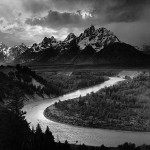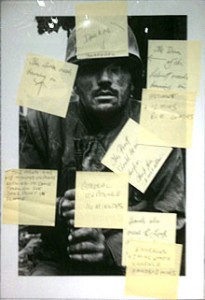Thoughts on image processing…
I thought I’d write a little about my own views on Photography, in particular my thoughts on how the process has evolved over the years from the earliest experiments of William Fox Talbot to the latest digital darkroom techniques.
Photographic Purists.. I’m not one of those!
Many people I speak to seem to be quite vehement in their defence of the purity of the traditional photographic process. They believe that you have to capture everything perfectly in-camera and that you should only print exactly what you took and that any form of post-processing is somehow ‘wrong’. Whilst I respect their personal preference I certainly don’t share it.
Firstly, there is a huge difference between what we see, and what the camera captures. The perceived image to us is a combination of the light landing on our retina and our perception of the world around us. The human mind is amazing at filling in the details from it’s experience. What the camera captures is pure physics.
Often, to make a captured image replicate what we see with our own eyes we need to do some additional processing on the image. A camera sensor, no matter how advanced, simply doesn’t have the dynamic range to represent the full detail in a scene as we see it. There is always a compromise which results in a loss of detail somewhere. By the application of processing areas
Lets consider a couple of real photographic pioneers:
The great American Landscape photographer Ansell Adams not only had an incredible eye for composition, he was also a master of creative exposure and the inventor of the zone system which formed the basis of many modern auto-exposure systems.
He would use creative masking, dodging and burning to enhance the drama in his shots often creating incredible detail with a very high dynamic range. (Click the image for a larger view).
Don McCullin FRPS CBE is a renowned war photographer who has taken some truly iconic images over the years, but even in the sixties he was still using creative darkroom techniques to get the best results:
Take a look at the image on the right here which has been reproduced countless times over the years. The yellow sticky notes are his instructions for processing the image showing exactly how long each area needs to be exposed for best results.
In a traditional darkroom this would require multiple exposures and masking out areas which need to be brighter in the final print. This is exactly the same concept as using an adjustment brush in Photoshop today
So, how is that relevant?
Well my point is simple. Processing has always been a part of truly creative photography though I suspect many people simply didn’t realise how much work had gone into some of those iconic images over the years.
People have been processing photographs for as long as they’ve been taking them, it’s only the methods that have advanced from a purely mechanical/chemical process into the digital domain.
[hr]
Children of the revolution
I consider myself very lucky to have been born when I was.
As a very young child I grew up in a pretty conventional family, the only bit of technology we had was a television. We did have a battery powered portable which we used to take caravanning, it was a push button black and white set with a terrible reception. Oh, and yes, you had to get up and walk over the lounge to change the channel, which didn’t happen that often as there were only three of them! We still played ‘records’ and ‘tapes’ but if you missed your favourite TV programme it was tough luck as you couldn’t record the telly on super-8 film!
I grew up at exactly the right time that technology has always been a natural part of my life. I got to experience the start of the technology boom, from the Walkman, home video recorders, CD players etc. I got my first computer when I was just 13 (a sinclair ZX-81) and worked my way through the 8-bit machines of the late 80’s, built my first PC in the early 90s and finally switched to the Mac about five years ago. it’s crazy to think that my mobile phone now has vastly more power than my first PC..
And so, for me the technology is a natural part of who I am, and I simply cannot see any reason why I wouldn’t want to use it.
Photography is an art, and I believe every artist has the right to choose their form. To me that means the whole process from capture, through to a finished image. If the viewer enjoys the final image then why should they even care how it was created? Personally I see nothing wrong with any amount of processing or digital manipulation and indeed, I’m thankful that I’ve grown up at a time when I can take full advantage of the amazing creative scope of the digital darkroom.
If you’re interested to learn more about my digital workflow then watch this space as I’ll be posting a page to discribe some of that process very soon.


